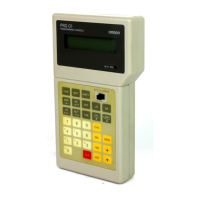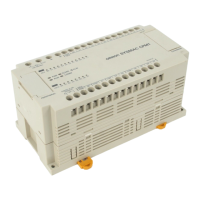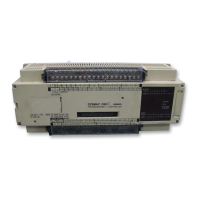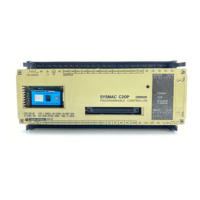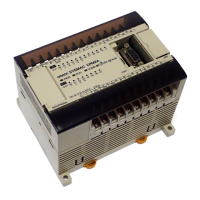34
the LR area. Once this is done, each PC is allocated write bits in the LR area
that it can write to so that the other PCs can read the data. All PCs in the link
will thus write to certain LR words and read from the words written by the oth-
er PCs to transfer data back and forth. Each PC must write data only to the
write area allocated to it: never to the write areas of other PCs. Allocation
examples are given later in this section.
Each of the PCs connected to the same Link Adapter must be allocated the
same size of LR area and the Programming Console must also be set to the
same value. If the data areas are not identical in size, data will be lost.
LR areas must be allocated to enable data transfers through the Link Adapt-
er. When LR areas are allocated, the size of the DR area is reduced as
shown below. Segments of 64 or 128 bits allocated from the DR area are
used for the LR area.
DR 00
DR 15
DR 00
DR 11
LR 00 to LR 03
LR 00 to LR 07
DR 00
DR 07
No LR Area 64-bit LR Area 128-bit LR Area
Allocating 0, 64 or 126 bits for the LR area corresponds to the following num-
ber of words for the transfer of data to the other PCs.
• 0 bits: LR area is not used.
• 64 bits: One write word (16 bits) for each CPU. DR area is reduced
to DR 00 through DR 11.
• 128 bits: Two write words (32 bits) for each CPU. DR area is re-
duced to DR 00 through DR 07.
Note If the size of the LR area is changed after programming operations have
been started or the program code accesses illegal addresses, program trans-
fer cannot be performed and the message “????” will be displayed on the
Programming Console.
The size of the LR area is designated using the following key sequence. This
operation must be performed in PROGRAM mode. This procedure allocates
memory to each of units 0 through 3 simultaneously.
0 bits
64 bits
128 bits
AB
The following diagrams illustrate the Programming Console displays at the
corresponding positions noted in the previous Key Sequence diagram.
Data Link Function
LR Allocation
LR Allocation Procedure
Memory Areas Section 3-2
